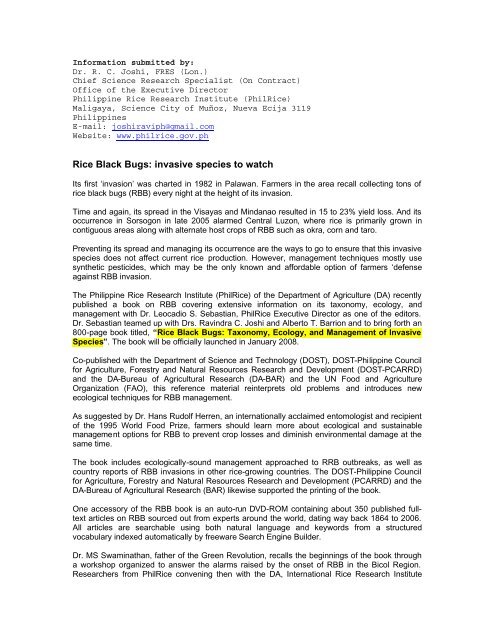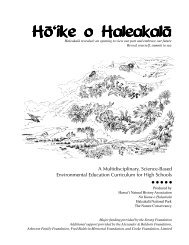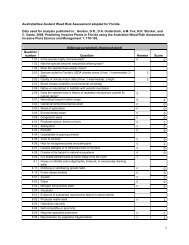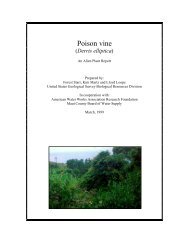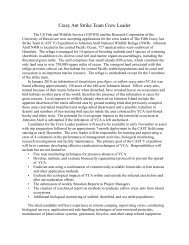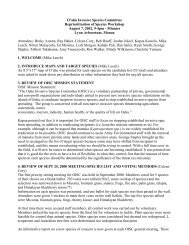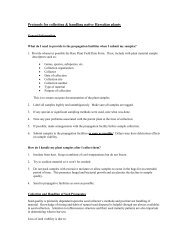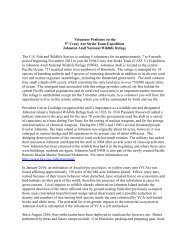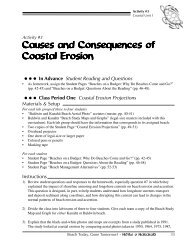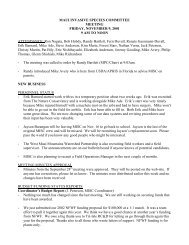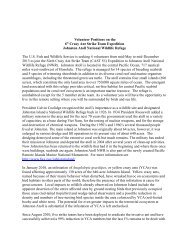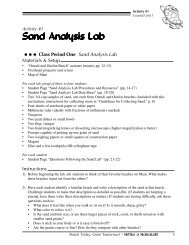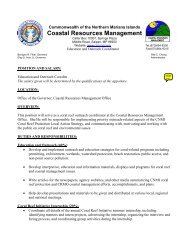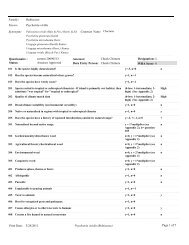Rice Black Bugs: invasive species to watch
Rice Black Bugs: invasive species to watch
Rice Black Bugs: invasive species to watch
Create successful ePaper yourself
Turn your PDF publications into a flip-book with our unique Google optimized e-Paper software.
Information submitted by:<br />
Dr. R. C. Joshi, FRES (Lon.)<br />
Chief Science Research Specialist (On Contract)<br />
Office of the Executive Direc<strong>to</strong>r<br />
Philippine <strong>Rice</strong> Research Institute (Phil<strong>Rice</strong>)<br />
Maligaya, Science City of Muñoz, Nueva Ecija 3119<br />
Philippines<br />
E-mail: joshiraviph@gmail.com<br />
Website: www.philrice.gov.ph<br />
<strong>Rice</strong> <strong>Black</strong> <strong>Bugs</strong>: <strong>invasive</strong> <strong>species</strong> <strong>to</strong> <strong>watch</strong><br />
Its first ‘invasion’ was charted in 1982 in Palawan. Farmers in the area recall collecting <strong>to</strong>ns of<br />
rice black bugs (RBB) every night at the height of its invasion.<br />
Time and again, its spread in the Visayas and Mindanao resulted in 15 <strong>to</strong> 23% yield loss. And its<br />
occurrence in Sorsogon in late 2005 alarmed Central Luzon, where rice is primarily grown in<br />
contiguous areas along with alternate host crops of RBB such as okra, corn and taro.<br />
Preventing its spread and managing its occurrence are the ways <strong>to</strong> go <strong>to</strong> ensure that this <strong>invasive</strong><br />
<strong>species</strong> does not affect current rice production. However, management techniques mostly use<br />
synthetic pesticides, which may be the only known and affordable option of farmers ‘defense<br />
against RBB invasion.<br />
The Philippine <strong>Rice</strong> Research Institute (Phil<strong>Rice</strong>) of the Department of Agriculture (DA) recently<br />
published a book on RBB covering extensive information on its taxonomy, ecology, and<br />
management with Dr. Leocadio S. Sebastian, Phil<strong>Rice</strong> Executive Direc<strong>to</strong>r as one of the edi<strong>to</strong>rs.<br />
Dr. Sebastian teamed up with Drs. Ravindra C. Joshi and Alber<strong>to</strong> T. Barrion and <strong>to</strong> bring forth an<br />
800-page book titled, “<strong>Rice</strong> <strong>Black</strong> <strong>Bugs</strong>: Taxonomy, Ecology, and Management of Invasive<br />
Species”. The book will be officially launched in January 2008.<br />
Co-published with the Department of Science and Technology (DOST), DOST-Philippine Council<br />
for Agriculture, Forestry and Natural Resources Research and Development (DOST-PCARRD)<br />
and the DA-Bureau of Agricultural Research (DA-BAR) and the UN Food and Agriculture<br />
Organization (FAO), this reference material reinterprets old problems and introduces new<br />
ecological techniques for RBB management.<br />
As suggested by Dr. Hans Rudolf Herren, an internationally acclaimed en<strong>to</strong>mologist and recipient<br />
of the 1995 World Food Prize, farmers should learn more about ecological and sustainable<br />
management options for RBB <strong>to</strong> prevent crop losses and diminish environmental damage at the<br />
same time.<br />
The book includes ecologically-sound management approached <strong>to</strong> RRB outbreaks, as well as<br />
country reports of RBB invasions in other rice-growing countries. The DOST-Philippine Council<br />
for Agriculture, Forestry and Natural Resources Research and Development (PCARRD) and the<br />
DA-Bureau of Agricultural Research (BAR) likewise supported the printing of the book.<br />
One accessory of the RBB book is an au<strong>to</strong>-run DVD-ROM containing about 350 published fulltext<br />
articles on RBB sourced out from experts around the world, dating way back 1864 <strong>to</strong> 2006.<br />
All articles are searchable using both natural language and keywords from a structured<br />
vocabulary indexed au<strong>to</strong>matically by freeware Search Engine Builder.<br />
Dr. MS Swaminathan, father of the Green Revolution, recalls the beginnings of the book through<br />
a workshop organized <strong>to</strong> answer the alarms raised by the onset of RBB in the Bicol Region.<br />
Researchers from Phil<strong>Rice</strong> convening then with the DA, International <strong>Rice</strong> Research Institute
(IRRI) and UP Los Baños researchers further inspired them <strong>to</strong> come up with an exhaustive RBB<br />
information material in the form of this book.<br />
In the book’s foreword, Swaminathan hopes the RBB book will be widely used by scientists,<br />
policy makers, consumers and farmers so that the threat of RBB will soon be part of his<strong>to</strong>ry.


